The case:
AKKC (Aalborg Kongres & Kultur Center) is experiencing an issue with event- and conference-holders cancelling their reservations at AKKC, because of restrictions and regulations, due to Covid-19.
AKKC has therefore reached out to the AAU, to hear if they could get some help, trying to find a solution for the center, to offer hybrid-meetings (Digital & Physical) to their clients.
Members of the team:
- Christian Gareth Potts (Entrepreneurial Engeneering)
- Alexandra Kildegaard (Experience Design)
- Louise Charlotte Nielsen (Experience Design)
- Frederik Mads Juul Hansen (Interactive Digital Media)
- Hassan Amin Hassan Mohamed (Entrepreneurial Engeneering)
- Anne Mette Brock Sørensen (Information Science)
Concept video
Based on the wants and wishes from our caseholder. We came up with the idea of an online conference-hall with the same possibilities as a physical one.
The Design Process
Day 1 – Meeting the Case Holder (AKKC)
We started out getting an introduction to the caseholder, which in our case was AKKC.
AKKC had the problem that, because of the pandemic, companies and eventholders had cancelled a lot of the conferences and meetings, which were planned to be held in the venue.
They are therefore looking for a solution to, how they can offer safe meeting enviornments and allow for more people to experience the conferences and meetings, without having the restrictions, which they currently have.
Day 2 – Planning the empirical data
Methods of data collection:
- Desk research
- What tech to use for the solution
- Define the roles, divide the tasks.
- AKKC offerings on their webpage?
- They have info on canceled events their and an overview of the events
- Interviews:(Provide questions/explain beforehand to help the participants prepare better.)
- AKKC ( Chris and Anne Mette )
- (Walk-along) Ask people present at the venue how can we improve the current state of the building, what don’t you like about the current set-up etc.
- Katrine Skovsgaard – Local event coordinator & Other Event Coordinators ( Hassan and Frederik )
- Previous participants at the venue. (Louise and Alex)
- Online software hybrid solution provide.
- External teachers team (NOT) at UCRAC. (Hassan and Frederik)
- Request list of cancelled participants, who the target group is for the solution.
- If possible interview
- Questionnaire
- Time plan of previous events: get to know how the event took place beforehand.
- Observations
- Field work at the AKKC.
- AKKC ( Chris and Anne Mette )
We aim to interview:
- 2 Speakers (Hassan & Frederik)
- 2 Event-participants (Louise & Alexandra)
- 1 Venue – AKKC (Christian & Anne Mette)
Day 3 – Data Collection
Two of the group members (Christian & Anne Mette) went to the venue, to learn more about the place and to learn more about the posibilities and restrictions.
The tour took around an hour, where the experience was both written down in notes and recorded on video(smartphone).
While the two group members were in the field, the four other group members did some online interviews with both previous conference participants and with previous event hosts. These interviews were either recorded via video or notes.
Day 4 – Material Storytelling & Affinity Diagram
Material Storytelling (Sandboxing)
How did we do?
During our session in Material Storytelling, we all (6) found toys or trinkets, which spoke to us, from the giant table in the middle, where 1000+ things were spread out. We then placed the trinkets in silent, until we were done with our setup.
We had created our vision for AKKC; Multiple scenes, user engagement, viewer to speaker interaction, international streaming and so much more.
While one of our group members wrote notes and another one filmed, we discussed the setup and what wishes and ideas we had for the final koncept.
This whole process took around an hour.
Affinity Diagram
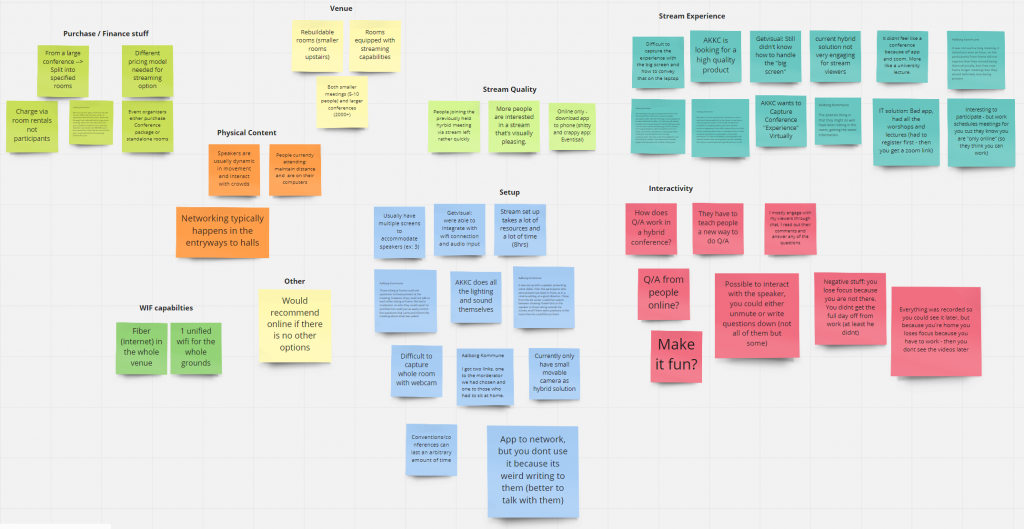
To clear up the notes from yesterdays interviews and field trip, we took our keywords and put into Miro (RealtimeBoard). The program allowed us to see each members mouse and to see, realtime, what everyone was doing. This way we could make sure that we didn’t add the same information multiple times and allowed us to create multiple clusers, based on all of our experiences.
Day 5 – Core Design Resume
The knowledge, that was gained during the other 4 days got put into a Core Design and 4 different innovation tracks was created, with different focus. These Innovation Tracks and Core Design, was then presented to the caseholder; AKKC.
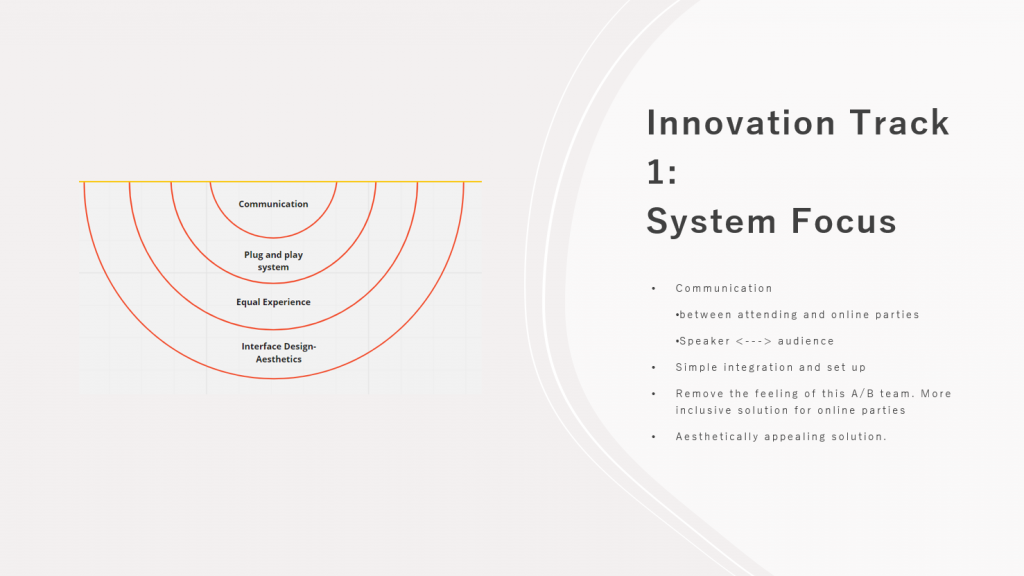
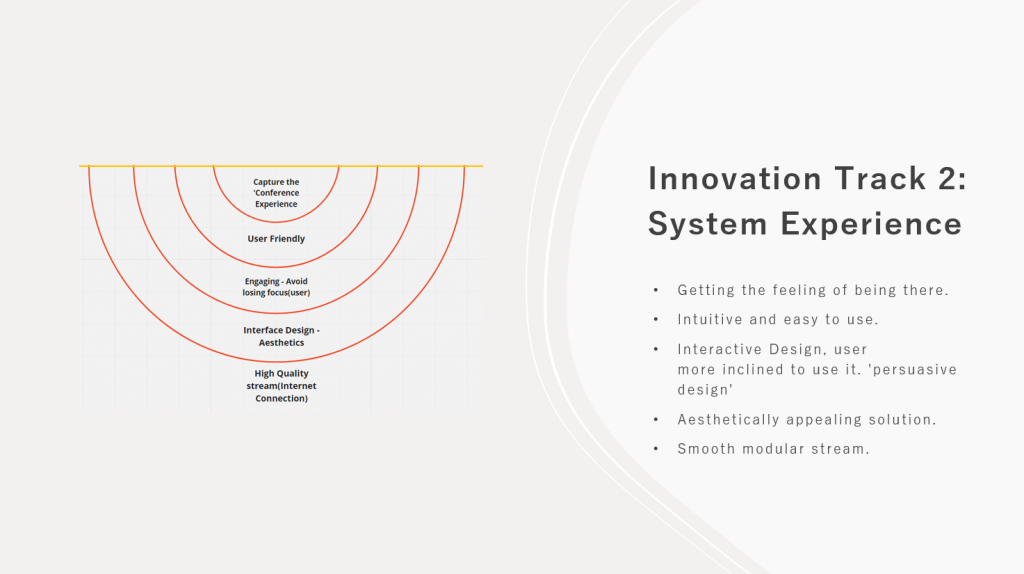
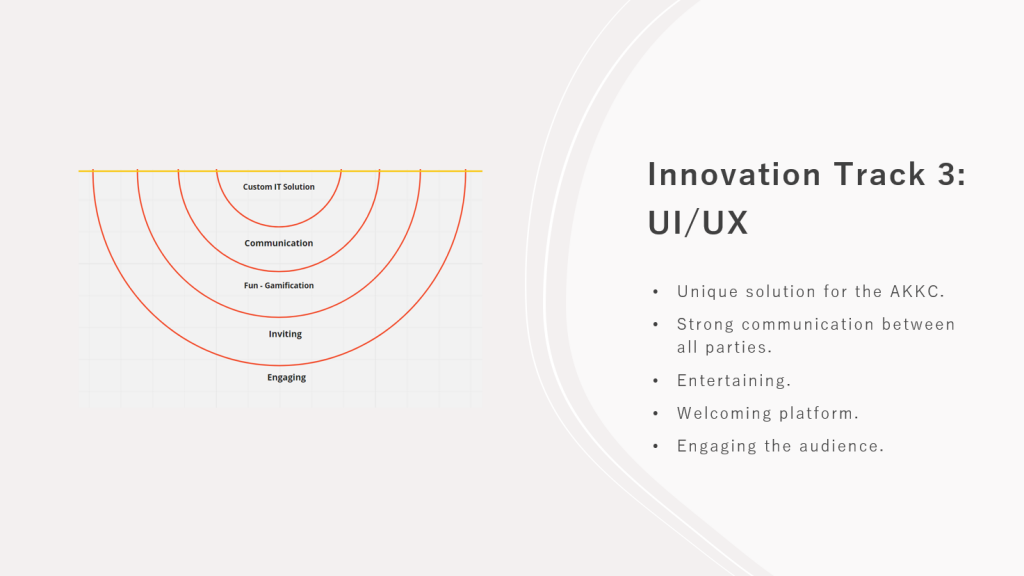
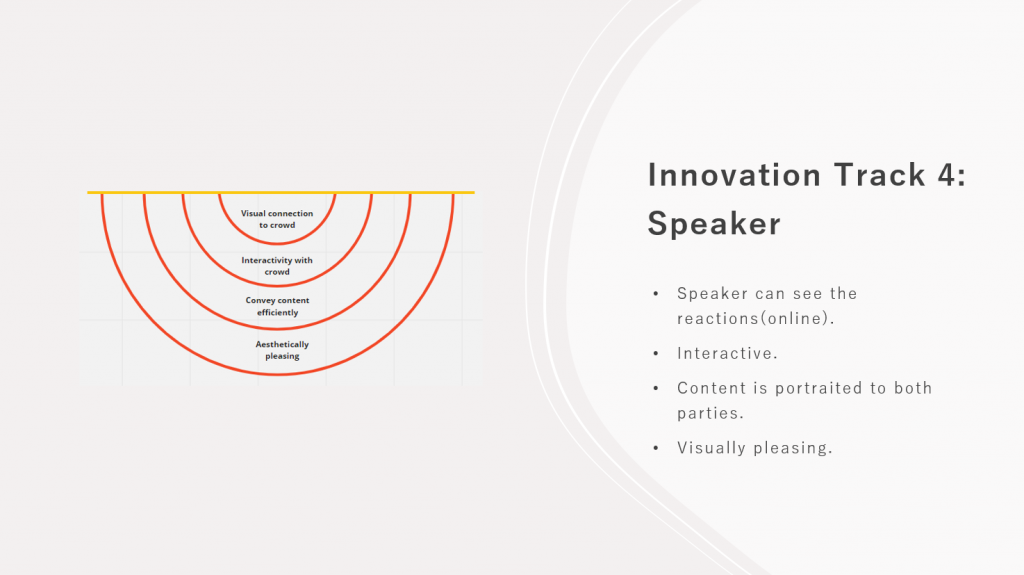
AKKC took a liking to a mix between the different innovation tracks and pointed out that they like the focus to be on engagement of the people watching digitally, communication between attendee and the speaker and easy installment for AKKC. As an extra bonus, they fell in love with the idea of gamification and requested that the design also integrates a gaming aspect.
Day 6 – ‘How might we question’ & Ideation Framework
We decided to use the AKKCs own ‘ Word of Wisdom’ and create a new Innovation Track, based on the different elements, which they liked in the other Innovation Tracks;
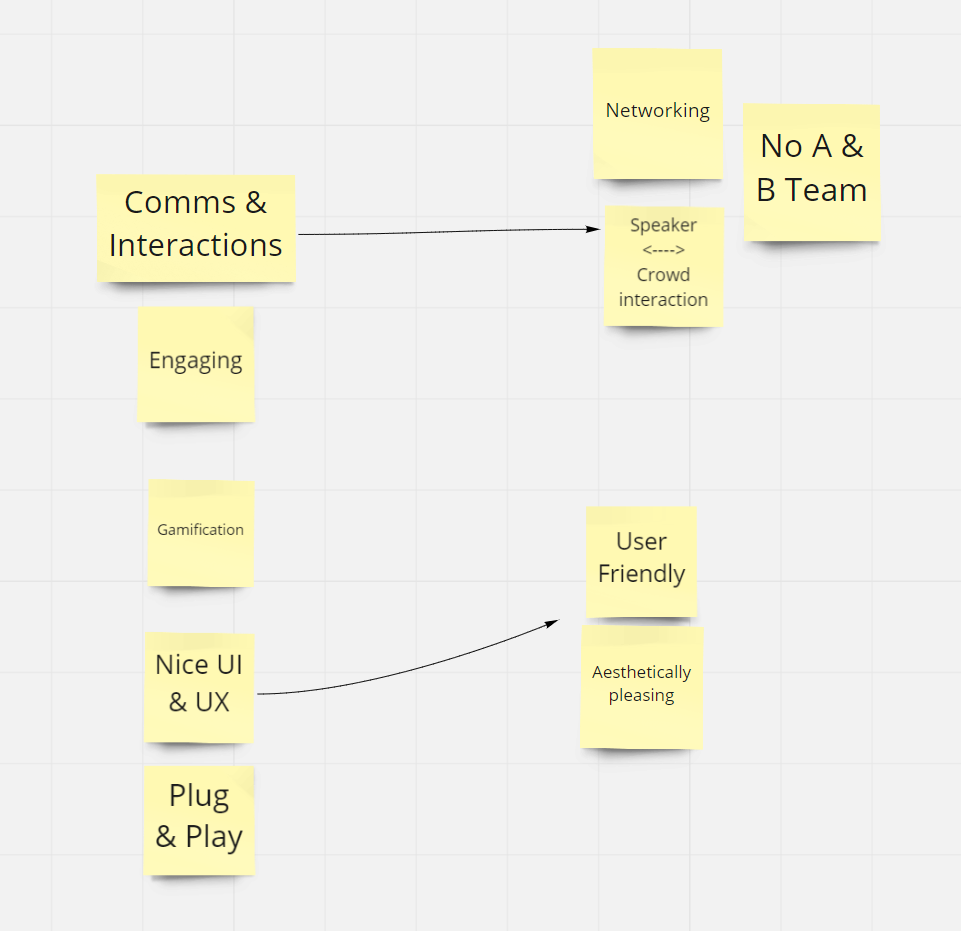
From this Innovation Track, we created ‘How might we’-questions individually and used a vote system to decide, which question to go on with.
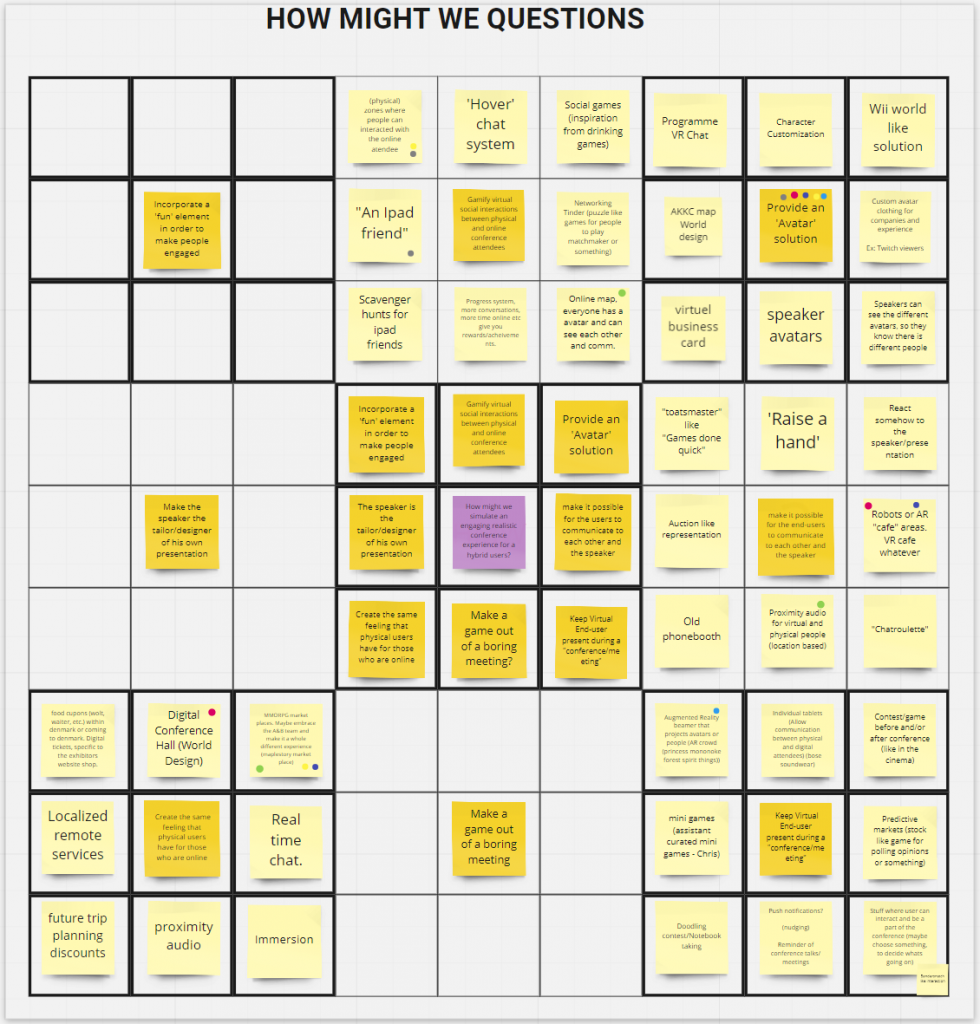
Then 8 ‘comments’/features were generated, based on the ‘How might we’ question.
These were then cut down to 5, were more specific features were generated based on the first overall 8.
Using the vote system again, we decided on the best 3 features.
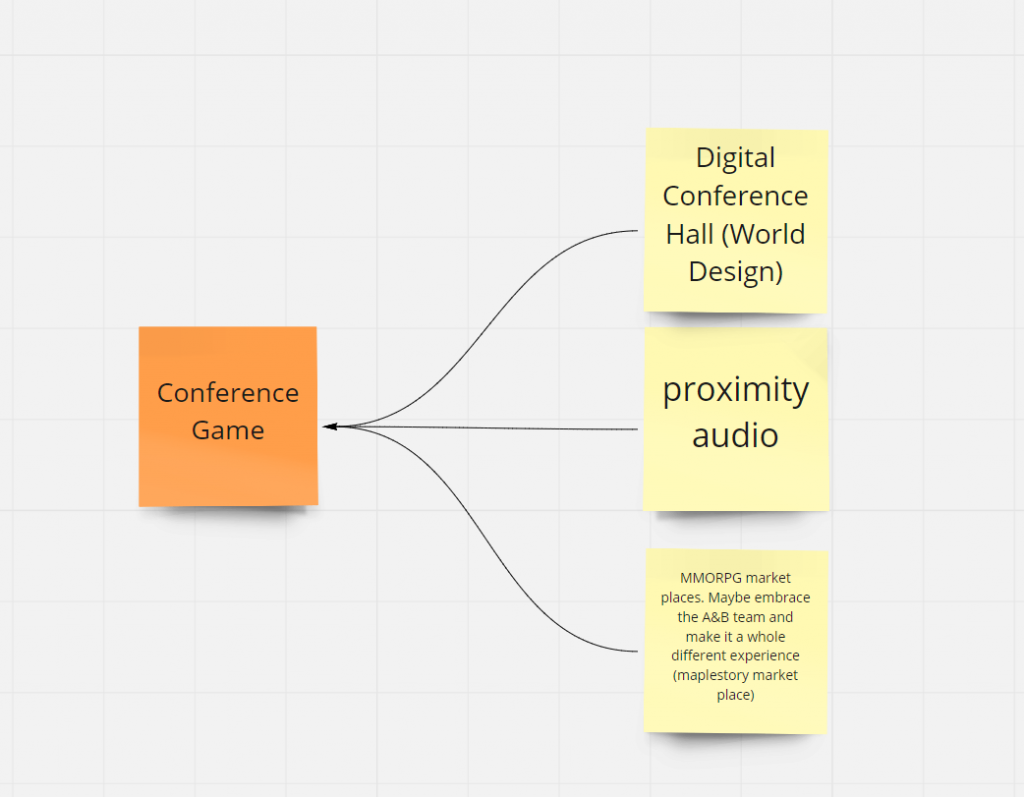
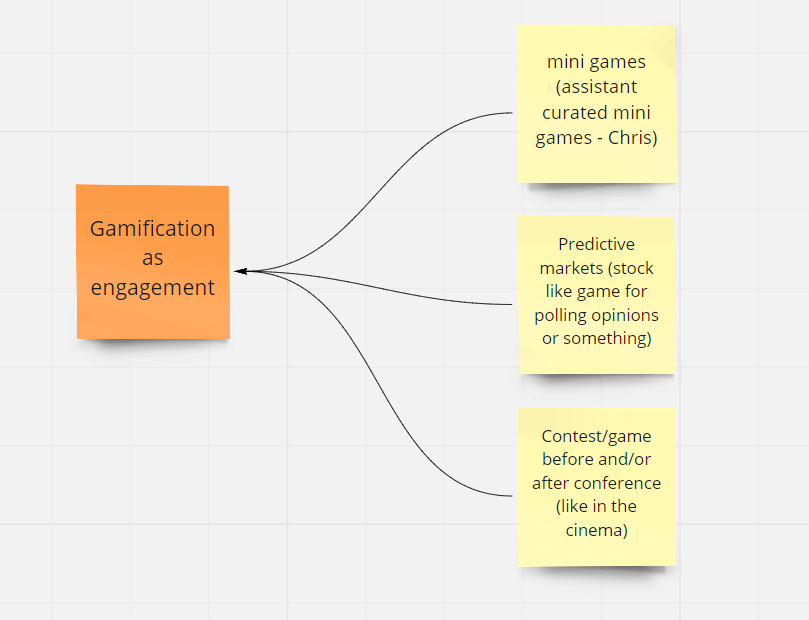
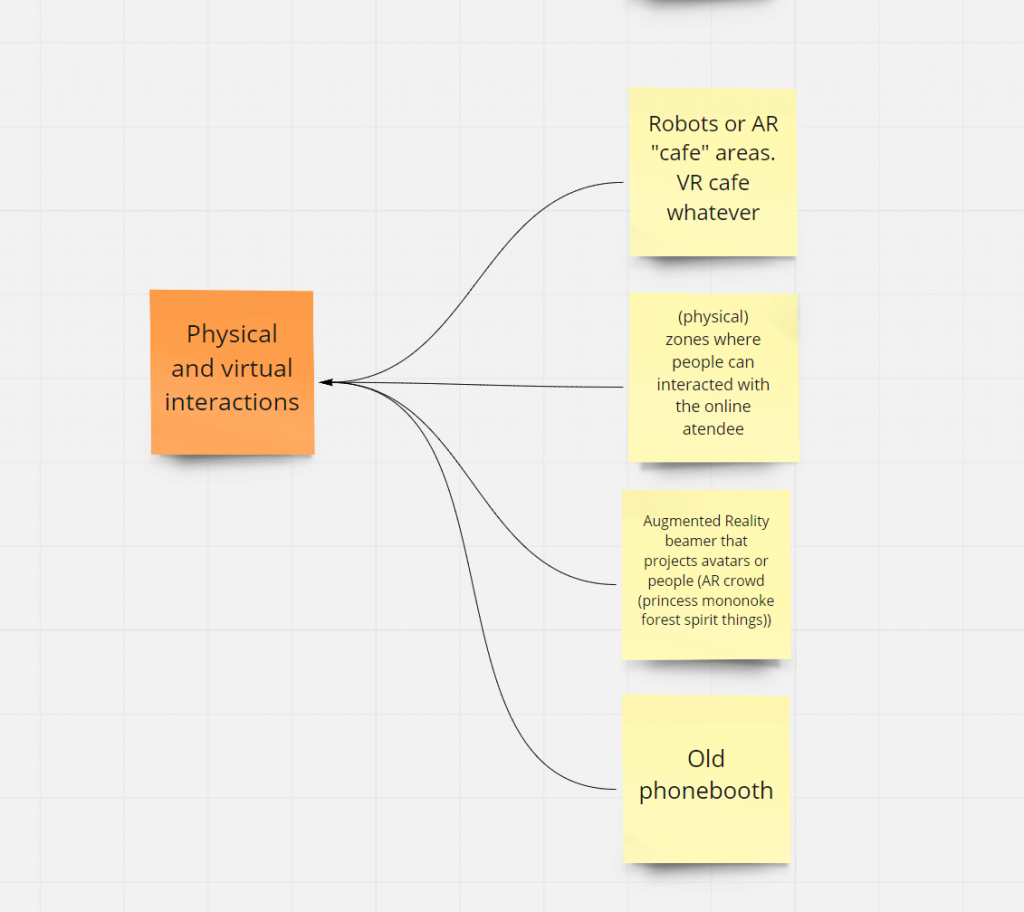
Day 7 – Prototyping
Day 8 – Visualised Concepts and Prototypes
This group worked with the AKKC to target conference attendees both the physical and remote users. The problem presented to us by the case partners surrounded the concept of hybrid meetings/conferences. They wanted us to find a unique solution that would accommodate both physical and remote attendees. Their key points circulated around capturing the “conference experience” for remote users, retaining their engagement and interest, and reducing the distance between both physical and remote parties (I.e remove the A and B team).
This concept is trying to solve the problem for virtual attendees where they are not able to physically attend the conference. In order to make a realistic experience we came up with the idea of a personalized avatar. First, the virtual attendee receives an e-mail from AAKC with information regarding the conference where the virtual attendee has to click on the digital link solution which will redirect the virtual attendee to a page where it is possible to create and customize an avatar. For the IT solution, this avatar is going to be placed into a digital version of the conference place where one can navigate, go to different speakers, network etc. with other attendees.
This concept is about the physical attendees interaction with the virtual attendees. When the physical attendees show up for the conference, they will be given a smart watch. They will through the smart watch be able to make their own avatar who will represent them in the online world. The avatar will represent the physical attendees on the online map, while they will be walking around the conference in real life. If someone virtual attendee wants to talk with the physical attendee, they will get a notification on the watch and the physical attendee can either accept or not. If they accept there will be a predefined zone (a phonebooth) at the conference where they can enter and talk with the virtual attendee.
This concept is about gamification. The concept is trying to solve the problem about how to engage the participants in the breaks of a speech because we focus on two concerns. The first one is how we establish an interaction between the physical and virtual attendee to avoid a A/B team feeling. Another concern is how AKKC can keep the virtual attendee engaged, focused and entertained in order to keep them motivated and active during the conference. To make this happen a game is made for the breaks where both physical and virtual attendees can play together, and they have to work together to finish and win the game.





